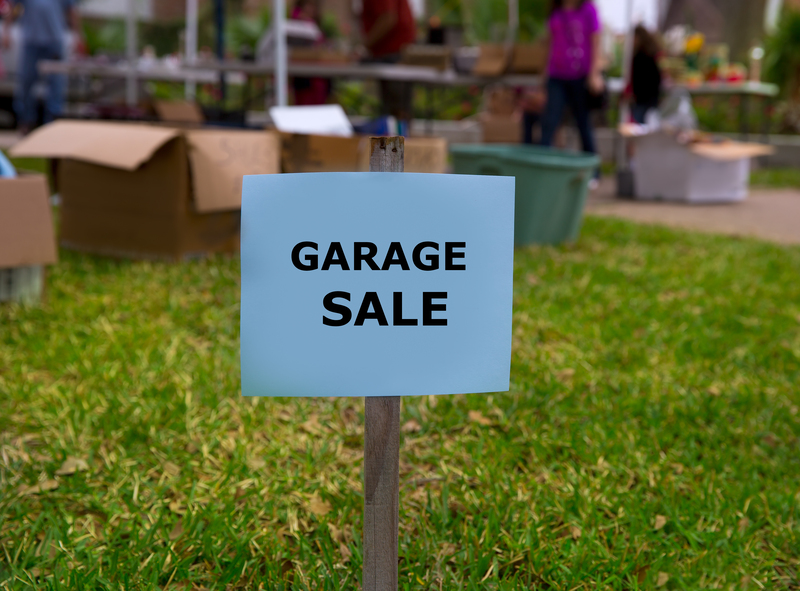How to Recognize Hazardous Waste Materials: A Complete Guide
Hazardous waste materials are present in many places, including industrial facilities, laboratories, and even households. Recognizing these wastes is crucial for environmental protection, workplace safety, and regulatory compliance. This comprehensive guide explores how to identify hazardous waste, what makes a substance hazardous, how to handle these materials safely, and the legal frameworks surrounding them.
What Are Hazardous Waste Materials?
Hazardous waste refers to any material discarded from industrial processes, households, or commercial activities that threatens human health or the environment due to its chemical, physical, or biological properties. This waste can be solid, liquid, sludgy, or gaseous, and must be properly managed to prevent contamination and injury.
Importance of Recognizing Hazardous Waste
Proper hazardous waste identification is critical for several reasons:
- Protects human health: Prevents exposure to toxic substances.
- Safeguards the environment: Reduces contamination of air, water, and soil.
- Legal compliance: Meets local, national, and international regulations.

Categories of Hazardous Waste Materials
There are several types and categories of hazardous waste. The most common are:
- Ignitable Waste: Flammable materials like solvents, fuels, and certain oils.
- Corrosive Waste: Acids, bases, and substances that can destroy materials or living tissues.
- Reactive Waste: Chemicals that can explode or release toxic fumes when exposed to water, heat, or pressure.
- Toxic Waste: Substances harmful or fatal when ingested or absorbed, such as heavy metals (lead, mercury) and pesticides.
Common Examples
- Batteries (lead-acid, lithium-ion, etc.)
- Paints and paint thinners
- Chemical cleaners and degreasers
- Fluorescent light bulbs
- Pesticides and herbicides
- Pharmaceuticals
Recognizing Hazardous Waste Materials: Key Signs
Identifying hazardous waste is not always straightforward. However, there are essential clues to look for:
Labels and Markings
- Check for official hazard symbols: skull and crossbones, corrosive hand, flame, exclamation mark, etc.
- Signal words: such as "Danger," "Warning," "Caution," or "Hazardous Waste".
- Ingredient lists: Look for listed hazardous chemicals.
Physical Characteristics
- Color and appearance: Unusual colors or layered liquids can indicate hazardous properties.
- Smell: Strong, acrid, or offensive odors often signal the presence of hazardous chemicals.
- Reactivity: Bubbling, fumes, or heat generation.
Documentation
- Material Safety Data Sheets (MSDS) or Safety Data Sheets (SDS): These provide detailed information about the risks and safe handling instructions.
- Manufacturer information: Product specifications and technical sheets.
Behavior Under Certain Conditions
- Burning easily: Materials that ignite at low temperatures.
- Corrosivity: Materials that cause burns to skin or deteriorate metals rapidly.
- Unexpected reactions: Combining with water to produce heat or toxic gases.
Laws and Regulations Governing Hazardous Waste
United States
In the U.S., hazardous waste identification and management fall under the Resource Conservation and Recovery Act (RCRA), administered by the Environmental Protection Agency (EPA). Guidelines help define hazardous materials, generator responsibilities, and proper disposal practices. Facilities must determine if their waste is hazardous based on four key criteria:
- Ignitability
- Corrosivity
- Reactivity
- Toxicity
Businesses and generators must also consider waste listed by the EPA, regardless of these characteristics.
European Union
Hazardous waste in the EU is regulated under the Hazardous Waste Directive 91/689/EEC. The European Waste Catalogue provides codes and definitions for hazardous materials, and proper classification is essential for compliance and environmental protection.
Other Countries
Many countries follow similar frameworks based on international agreements such as the Basel Convention, emphasizing the importance of correct hazardous waste identification and cross-border movement controls.
Step-by-Step Guide: How to Identify Hazardous Waste
Use the following procedure to effectively recognize hazardous waste materials:
Step 1: Characterize Your Waste
- Determine the waste's physical and chemical properties.
- Consult SDS and manufacturer labels for hazard information.
Step 2: Compare to Exclusion Lists
- Check if your waste is specifically excluded from hazardous categories by regulations.
Step 3: Apply the Four Hazardous Characteristics
- Ignitability: Does the material catch fire easily?
- Corrosivity: Is it acidic or basic enough to burn tissues or corrode metals?
- Reactivity: Is it unstable, explosive, or does it produce toxic gases?
- Toxicity: Would it leach hazardous components into the environment or threaten human health?
Step 4: Check Regulatory Lists
- Compare ingredients to EPA or local authorities' lists of recognized hazardous wastes.
Step 5: Consult an Expert if in Doubt
- If unknown or unlabelled substances are encountered, seek professional help--environmental consultants, chemists, or hazardous waste handlers--to test and classify the material.
Recognizing Hazardous Household Waste Materials
Most people associate hazardous waste with factories, but many household products meet the definition.
- Cleaners: Ammonia, bleach, and acidic toilet cleaners are hazardous and should not be poured down drains.
- Paints and solvents: Contain volatile organics and should be disposed of at designated drop-off sites.
- Batteries and electronics: Contain heavy metals and chemicals unsafe for landfill disposal.
Best Practices for Safe Handling and Storage
Once you have recognized hazardous waste materials, safe handling and storage are essential to prevent accidents and pollution.
Use Proper Containers
- Use containers designed to withstand chemical or physical hazards associated with the waste.
- Seal tightly to prevent leaks, spills, or vapor escape.
Label Clearly
- Each container must be labeled with the contents, hazards, and accumulation start date.
Follow Segregation Protocols
- Do not mix different hazardous wastes.
- Separate incompatible materials--e.g., acids and bases--to prevent dangerous reactions.
Maintain Safety Data
- Keep updated Safety Data Sheets (SDS) on-site and accessible to personnel.
Train Employees or Residents
- Ensure everyone who handles hazardous waste recognizes warning signs and follows emergency procedures.
Why Is Proper Hazardous Waste Recognition Important?
- Safety: Prevents injuries, fires, explosions, or chemical burns.
- Compliance: Avoids legal penalties and shutdowns for improper disposal.
- Environmental protection: Reduces the risk of groundwater, soil, or air contamination.
Frequently Asked Questions on Hazardous Waste Identification
What should I do if I find a suspicious unknown substance at work or home?
Do not touch, inhale, or move the material. Evacuate the area if necessary and call local emergency or hazardous materials teams. They have the training and equipment to identify and manage the waste safely.
Can I dispose of hazardous household waste in the regular trash?
No. Hazardous household waste requires special handling. Contact your local municipality for collection days or drop-off sites.
Is all e-waste considered hazardous?
Not all, but many electronics contain hazardous substances like lead, mercury, and cadmium. Specialized recycling or disposal at electronics collection centers is necessary.
How are hazardous wastes tracked?
Hazardous waste generators must keep detailed records--from production through transport to final disposal. In the U.S., the EPA requires a manifest system to ensure proper tracking and accountability.

Conclusion: Recognizing Hazardous Waste Safeguards Everyone
Knowing how to recognize hazardous waste materials protects your health, community, and environment. Whether in a factory, office, laboratory, or home, learning the warning signs, types, and handling protocols ensures safe and legal management. By staying informed and vigilant, you contribute to a cleaner, safer world for all.